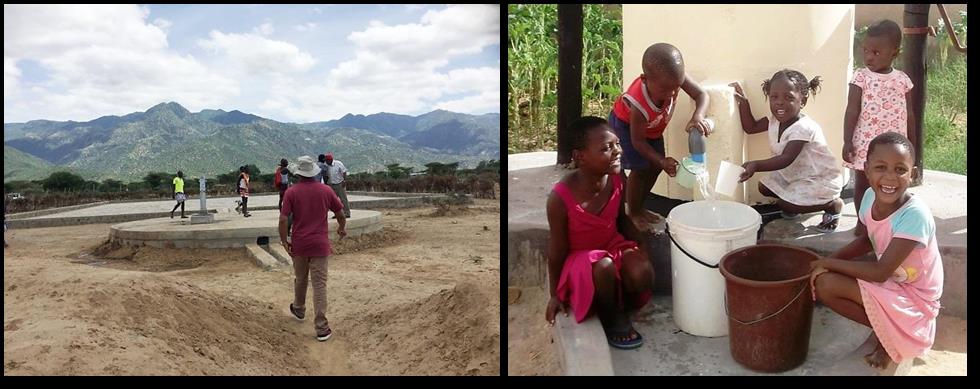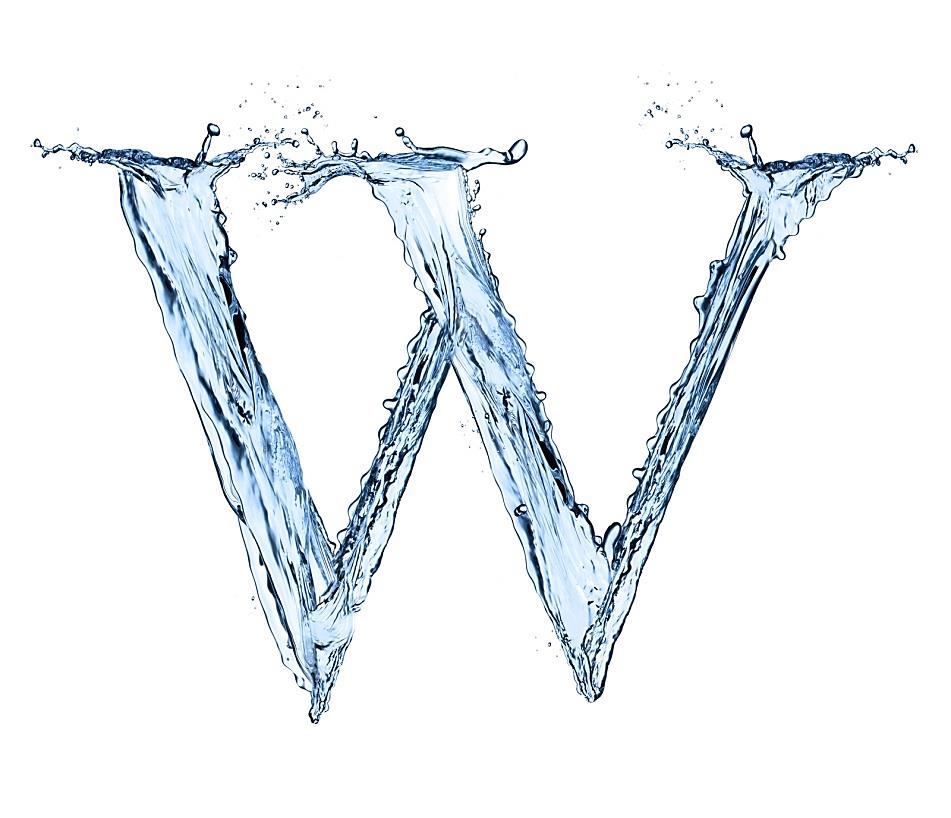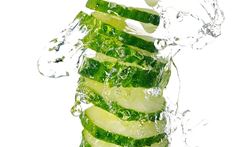
by Fern Shaw | Aug 31, 2016 | Christian Aid, Water
It’s a very important week in water this week, with the World Water Week summit taking place in Stockholm from 27 August to 02 September.
Participants from around the world will gather to convene events about water and development issues. It is also an opportunity for individuals from around the globe also present their findings at the scientific workshops.
The theme for this year’s summit is ‘Water for Sustainable Growth’.
Having recently returned from a visit to Ethiopia with Christian Aid, a charity that AquAid have partnered with since the company’s start in 1998; and having witnessed first-hand the vital need for water provision throughout the country, I can only concur that water provision to those that need it isn’t enough (although it’s a fantastic start!) – in order to make a difference in the long term – sustainable water provision is essential.
So, what can you do?
You can choose a water provider whose core belief is making a difference in other people’s lives. How so, you may ask? Well, simply put, AquAid have, from the start, donated to charities whose focus is on sustainable water provision. This means that for each bottle of water or water cooler purchase, a donation is made to these charities.
What do we do?
Of course, we’re a business and we operate on business principles. How we’re a little different is that a core business principle is to contribute to charities that make a difference. This is achieved through long standing relationships with charities such as Christian Aid and the AquAid founded Africa Trust.
Since our partnerships with these two charities began, AquAid have donated over £10 million to charity and more than 5 million people in more than 7 countries now have access to a better water source and a more sustainable ‘water’ future.

by Fern Shaw | Aug 19, 2016 | Water
We can’t always be stats and measurements and water saving tips. Sometimes we just have to go with the flow (aha) and celebrate the joys of descriptive language.
Keeping it watery, here are a few words from A to Z (or thereabouts) to describe the liquid bringer of life (unless you’re a vampire of course, then it’s a different story):
Aqueduct
Brook
Cloudburst
Fluvial is a term used in geography and geology to refer to the processes associated with rivers and streams and the deposits and landforms created by them.
Monsoon
Oxbow – used to describe both a yoke for an ox and a particular shaped bend in a river. (I just learnt that – colour me proud!)
Precipitation is any product of the condensation of atmospheric water vapour that falls under gravity. The main forms of precipitation include drizzle, rain, sleet, snow, graupel and hail. Say it with me now … pre …cip …ee … tation! Isn’t that satisfying? (Okay, I’ll admit, there’s a little Rocky Horror colouring that watery descriptive word).
Qanat – an underground tunnel for carrying irrigation water.
Watery
Aren’t they lovely? Say them with me now Clowed BURST! Floo…vee…owl Mon…sooooon.
Do you have any favourite words describing water in all its magnificent permutations? If so, please feel free to add them in the comments section.

by Fern Shaw | Aug 1, 2016 | Water
To avoid any confusion, the title refers to islands around the island of Britain and Ireland and Scotland and not to the island of Britain itself. Yes?
Picture the scene – summer holidays many, many summers ago. An avid bookworm already at eight stands in a bookstore in town. Her parents have given her enough pocket money for a book – one book, mind you. She stares up at the colourful rows of books spines in front of her, spoilt for choice … she reads the title, ‘Five on a Treasure Island’ – and that was that; she was caught, completely. Islands forever after would be places of mystery, adventure and on occasion a little frightening.
 Why we’re talking islands is because in a recent blog about what to do and where to go this summer, I made mention of the option to visit an island steeped in history.
Why we’re talking islands is because in a recent blog about what to do and where to go this summer, I made mention of the option to visit an island steeped in history.
I was referring to Flat Holm Island whose earliest known visitor was St. Cadoc. He made frequent visits to the island in the late 6th century for periods of tranquil meditation, especially during Lent. During the 18th century, the island’s location made it an ideal base for smuggling. Although Flat Holm is in full view of both the Welsh and English coasts, customs authorities were powerless to act as they had no boat to take them to the island. According to tradition, a small cave in the east cliff at Flat Holm was used for the storage of contraband, mainly tea and brandy.
Then there’s Eilean Donan (pictured above with castle) – a small tidal island where three lochs meet; Loch Duich, Loch Long and Loch Alsh, in the western Highlands of Scotland. A picturesque castle which lies just under a mile from the village of Dornie dominates the island. Since the castle’s restoration in the early 20th century, a footbridge has connected the island to the mainland.
 Eilean Donan is part of the Kintail National Scenic Area, one of 40 in Scotland. In 2001, the island had a recorded population of just one person. The name of the island which means simply ‘island of Donnán’, is named after Donnán of Eigg, a Celtic saint martyred in 617.
Eilean Donan is part of the Kintail National Scenic Area, one of 40 in Scotland. In 2001, the island had a recorded population of just one person. The name of the island which means simply ‘island of Donnán’, is named after Donnán of Eigg, a Celtic saint martyred in 617.
Eigg is one of the Small Isles, in the Scottish Inner Hebrides. It lies to the south of the Skye and to the north of the Ardnamurchan peninsula and was also called Eilean Nimban More – ‘island of the powerful women’ until the 16th century. Notably, Eigg generates virtually 100% of its electricity using renewable energy.
In case visiting these particular islands holds no appeal, never fear – there are more than 267 inhabited islands dotted in and around the United Kingdom:
- In the United Kingdom: 124 and part of Ireland
- In England: 19 and part of Great Britain
- In Northern Ireland: 1 and part of Ireland
- In Wales: 6 and part of Great Britain
- In Scotland: 97 and part of Great Britain
- Bailiwick of Guernsey: 6
- Bailiwick of Jersey: 1
- Republic of Ireland: 10 and part of Ireland
- Isle of Man: 2
So, pack your sarmies, your water bottle and your sense of adventure and celebrate summer with a visit to one or many of these amazing islands, steeped in history and full of folklore and tales of derring-do!

by Fern Shaw | Apr 26, 2016 | Charity, Christian Aid, Water
We should all know the direct correlation between drinking sufficient water and keeping healthy by now (OK, well I should, I’ve researched and written about it often enough – maybe you shouldn’t), but quite surprisingly in spite of a plethora of information from just about everywhere, it seems we still need to be told about this pretty basic principle.
- To be fair (all about fairness, me) in this tech age, I may just be more easily convinced if I had some clever water bottle that glowed at me until I drank from it or;
- What about a water bottle that apparently dings at you when it’s time to drink up!
- Then, getting even more tech spec-ee, what about all these apps that alert you to the fact that you haven’t had your daily water as yet. Yep, there really are a variety of ‘drink water’ apps available for smart phones and for those that like to add cucumber or similar to their water, there is a water bottle / spiral slicer (yep, really) that slices your cucumber directly into your bottles water.
These inventions and concepts (as some are still at the conceptual stage) are quite amazing, clever and resourceful.
For me though, not having a smart phone (oh woe is me) and I’m guessing I’m one of many millions that also don’t have a smart phone, I still believe that it’s kind of up to the individual (unless you have a forward thinking team at work who realise that hydrated employees are happier, healthier and make for a more productive team) to ensure that you drink your water.
What’s even more amazing is that if you choose your drinking water from AquAid, a portion of the proceeds of your water cooler purchase is automatically donated to water projects around the globe – these being to Christian Aid and The Africa Trust.
Now, that’s pretty amazing!

by Fern Shaw | Apr 21, 2016 | Water
I was quite amazed and impressed with the extensive, almost unending list of one’s brain function and how something as simple as drinking water can radically affect how our brain function.
So impressed in fact, that I’ve written a Part II, because as we know, information is power and if we’re well informed, we empower ourselves to be able to take better care of our wonderful little selves.
So, without further ado, here are a number of examples of brain power and how drinking water keeps these operations functioning at capacity:
Memory
- Every time you recall a memory or have a new thought, you are creating a new connection in your brain.
- Memories triggered by scent have a stronger emotional connection, and therefore appear more intense than other memory triggers.
- While you sleep at night may be the best time for your brain to consolidate all your memories from the day. Lack of sleep may actually hurt your ability to create new memories.
Brain Function
- Your brain uses twenty percent of the total oxygen in your body.
- If your brain loses blood for eight to ten seconds, you will lose consciousness.
- While awake, your brain generates between ten and twenty three watts of power – or enough energy to power a light bulb.
- The old adage of humans only using ten percent of their brain is not true. Every part of the brain has a known function.
Psychology of Your Brain
- You can’t tickle yourself because your brain distinguishes between unexpected external touch and your own touch.
- The connection between body and mind is a strong one. One estimate is that between fifty to seventy percent of visits to the doctor for physical ailments are attributed to psychological factors.
Who would’ve thunk it, as my mum says. A clear case then to encourage you to drink enough water to ensure that your wonderful, hard-working brain continues to be able to carry out its myriad functions at capacity.

by Fern Shaw | Apr 13, 2016 | Water
My brain (oh Pooh of very little brain) is wont to skip along from thought to thought not unlike a greased toboggan on a stretch of snow. On occasion though, it hits the tarmac or an unsnowed patch and sticks a little. And ….. then it’s off again.
One of these skippity thought processes snagged on the thought about the masters of maths, Pythagoras, as an example; or da Vinci? What about brainboxes such as Plato (a favourite of mine); Euclid and Einstein?
I wondered if one went back in time and we studied their dietary and hydration habits, if we would find out whether they were big on the hydration or whether they were more of the tortured genius unhealthy habits, staying awake for days on end type habits individuals.
I guess we’ll never know (unless you have the time to study ancient texts to establish what any of these of large brained people ate and drank?) but what I do know is that drinking water aids us in incalculable ways, not excluding:
The brain is one of the most important organs in your body to keep fuelled. It is approximately 85 percent water and brain function depends on having abundant access to water.
Water gives the brain the electrical energy for all brain functions, including thought and memory processes.
Studies have proven that your brain cells need twice as much energy compared to other cells in the body. Water provides this energy more effectively than any other substance.
Water is also needed for the brain’s production of hormones and neurotransmitters. Nerve transmission requires one-half of all the brain’s energy.
When your brain is functioning on a full reserve of water, you will be able to think faster, be more focused, and experience greater clarity and creativity.
Daily hydration not only helps with better thinking, it can help prevent attention deficit disorder in children and adults.
The reason why it is important to drink plenty of water throughout the day for optimal brain function is that your brain does not have any way to store water.
I found the last bit of information fascinating, I wasn’t aware that the brain cannot ‘store’ water – it makes it all the more important to ensure that in order to have your brain function at optimal levels, you need to drink sufficient water.
I may not have the brain capacity of the fathers of maths, but at least now I know how to keep my brain happy, functioning and healthy – all I need to do is drink the original energy drink – water.




 Why we’re talking islands is because in a recent blog about what to do and where to go this
Why we’re talking islands is because in a recent blog about what to do and where to go this  Eilean Donan is part of the Kintail National Scenic Area, one of 40 in Scotland. In 2001, the island had a recorded population of just one person. The name of the island which means simply ‘island of Donnán’, is named after Donnán of Eigg, a Celtic saint martyred in 617.
Eilean Donan is part of the Kintail National Scenic Area, one of 40 in Scotland. In 2001, the island had a recorded population of just one person. The name of the island which means simply ‘island of Donnán’, is named after Donnán of Eigg, a Celtic saint martyred in 617.

